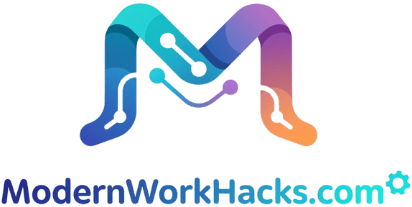In a world obsessed with hustle culture and 80-hour workweeks, what if the path to greater achievement isn’t more time, but less? Counter-intuitive as it seems, imposing constraints on your work time might be the key to unlocking your most creative and productive self.
When Basecamp co-founder Jason Fried announced the company’s shift to a 32-hour, four-day workweek in 2018, it wasn’t just a nice perk—it was a strategic decision based on a powerful insight: constraints drive innovation. Five years later, they’ve proven that limiting work hours doesn’t limit results. In fact, it may enhance them.
The Power of Time Constraints
We’ve all experienced the phenomenon: a project expands to fill whatever time we allocate to it. Give yourself a week for a task that could be done in a day, and somehow it takes the full week. This is Parkinson’s Law in action, and it’s silently sabotaging your productivity.
Basecamp turned this concept on its head. By compressing their workweek, they forced themselves to make hard decisions about what truly matters. “The 32-hour workweek at Basecamp isn’t about working faster; it’s about working smarter,” explains Fried. “When you have less time, you waste less time.”
This approach required fundamental changes to how they operate. Meetings became shorter and more focused. Documentation improved. And perhaps most importantly, the company developed a sharper sense of priority—distinguishing between what’s merely urgent and what’s genuinely important.
Why Constraints Spark Creativity
Constraints don’t just improve efficiency; they actively enhance creativity. This might seem paradoxical—don’t creative breakthroughs require freedom and abundant resources? The evidence suggests otherwise.
When we face limitations, our brains work harder to find solutions. Without the luxury of throwing endless time at a problem, we’re forced to think differently. This is why some of history’s most innovative ideas emerged during periods of scarcity rather than abundance.
Consider these examples:
- The Apollo 13 mission’s famous CO₂ scrubber solution was devised under extreme time pressure with limited materials
- Twitter’s 280-character limit (originally 140) drove a new form of concise communication
- Dr. Seuss wrote “Green Eggs and Ham” using only 50 different words—on a bet
Basecamp’s experiment with a shortened workweek created precisely this kind of productive constraint. With less time available, the team had to question conventional wisdom about how work should be structured.
Quality Over Quantity: The Science Behind Working Less
The data consistently shows that after a certain point—typically around 4-5 hours of deep, focused work—our cognitive abilities decline sharply. Yet many companies still operate as if human attention were an infinite resource.
Research from Stanford University found that productivity per hour declines dramatically when the workweek exceeds 50 hours, and productivity drops so much after 55 hours that putting in additional time becomes pointless.
Basecamp recognized this reality. Rather than expecting 40+ hours of mediocre work, they opted for 32 hours of excellence. As Fried notes, “I’d rather have 4 great days than 5 good days.”
This approach acknowledges a fundamental truth: creative knowledge work isn’t like factory production. You can’t simply add more hours to get more output. The quality of your thinking matters far more than the quantity of your time.
Implementing Constraints in Your Own Work
You don’t need to run a company to benefit from strategic constraints. Here are practical ways to apply this principle in your own work life:
1. Create artificial deadlines
Don’t wait until the actual deadline to finish a project. Set your own deadline at 75% of the allotted time. You’ll be amazed at how often you can meet this accelerated timeline when you make it non-negotiable.
2. Schedule less time for meetings
If you normally schedule an hour, try 30 minutes instead. The discussion will likely become more focused and efficient. As a bonus, shorter meetings are less likely to be filled with unnecessary tangents.
3. Practice time-blocking with buffers
Allocate specific blocks of time to tasks, but deliberately schedule less time than you think you need. Include buffer periods between blocks to accommodate overruns without derailing your entire day.
4. Limit your tools
Too many productivity apps can paradoxically make you less productive. Choose a minimal set of tools and stick with them. Constraints on your technological options can reduce decision fatigue and context switching.
5. Experiment with compressed workweeks
Even if your company doesn’t offer a four-day workweek, you can experiment with compressing your most important work into fewer, focused hours. Try dedicating one day a week to meetings and administrative tasks, freeing the remaining days for deep work.
“The way to get good ideas is to get lots of ideas and throw the bad ones away.” — Linus Pauling
The Hidden Benefits of Working Less
Basecamp’s four-day workweek delivered benefits beyond improved productivity. Employees reported lower stress levels, better work-life balance, and higher job satisfaction. This translated into tangible business advantages: lower turnover, reduced burnout, and even improved recruitment.
There’s also a powerful ecological argument for shorter workweeks. One less day of commuting and office operations per week represents a 20% reduction in the carbon footprint associated with those activities. As companies increasingly prioritize sustainability, this benefit shouldn’t be overlooked.
Perhaps most importantly, a shortened workweek fundamentally changes our relationship with work itself. When we know our time is limited, we become more intentional about how we use it. We start questioning low-value activities that have persisted simply out of habit or tradition.
Overcoming Resistance to Constraints
Despite the compelling case for constraints, implementing them often meets resistance—both from organizations and from our own ingrained habits. Here’s how to overcome common objections:
The “more is better” fallacy
Many of us have been conditioned to equate more hours with more dedication and better results. Challenge this assumption by focusing on outcomes rather than inputs. What matters is what you accomplish, not how long it took.
Fear of missing out
With limited time, you’ll need to say “no” more often. This can trigger fear of missing important opportunities. Remember that saying no to low-priority items means saying yes to high-priority work that delivers greater impact.
The adaptation period
Any significant change in work patterns requires an adjustment period. If you experiment with constraints and find the initial results disappointing, don’t abandon the approach immediately. Give yourself time to develop new workflows and habits.
As Basecamp discovered, the discomfort of constraints often signals that you’re challenging status quo thinking—precisely the point of the exercise. The initial awkwardness of working within new limitations eventually gives way to innovative solutions you wouldn’t have discovered otherwise.
Beyond Time: Other Productive Constraints
While Basecamp’s example focuses on time constraints, the principle extends to other resources as well. Strategic limitations on team size, budget, or feature scope can drive similar breakthroughs.
Amazon famously uses the “two-pizza team” rule—if a team can’t be fed with two pizzas, it’s too large. This constraint on team size forces clarity in communication and prevents the coordination overhead that plagues larger groups.
Similarly, many successful products distinguish themselves not by what they include, but by what they deliberately exclude. Apple’s original iPhone lacked features that competitors considered essential, yet its focused simplicity drove its success.
The Future of Work: Less But Better
As artificial intelligence and automation continue to transform the workplace, the premium on human creativity will only increase. The truly irreplaceable work will be the kind that requires innovative thinking and novel connections—precisely the kind of work that benefits from strategic constraints.
Basecamp’s four-day workweek isn’t just a workplace perk; it’s a glimpse into a future where we value quality of work over quantity of hours. As Fried observes, “The 40-hour workweek is a leftover relic from the industrial age. Knowledge work is different, and our schedules should reflect that.”
The most forward-thinking companies are already moving in this direction. Microsoft Japan tested a four-day workweek and saw productivity jump by 40%. Iceland’s nationwide trial of reduced working hours led to maintained or improved productivity across a range of industries.
The evidence is mounting: less time, strategically constrained, often leads to better results. By embracing this counter-intuitive truth, you can achieve more meaningful work while reclaiming hours for the rest of your life.
In the end, the most valuable constraint might be the one we place on work itself—not because we value work less, but because we understand better how it actually happens. True productivity isn’t about maximizing hours; it’s about maximizing impact within the hours we choose to work.
Real Stories Behind This Advice
We’ve gathered honest experiences from working professionals to bring you strategies that work in practice, not just theory.
- Read more: Get the full details in the original article
- Join in: See what others are saying and share your thoughts in the Reddit discussion
- Tell your story: Have experience with this? Help others by sharing what worked for you at our Contact Us page
At ModernWorkHacks, it’s practical ideas from real people.




0 Comments